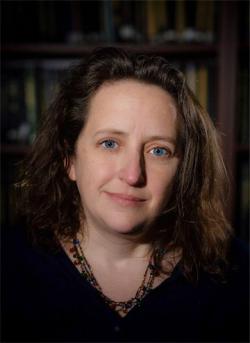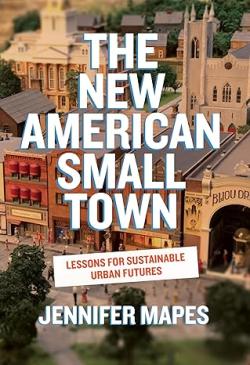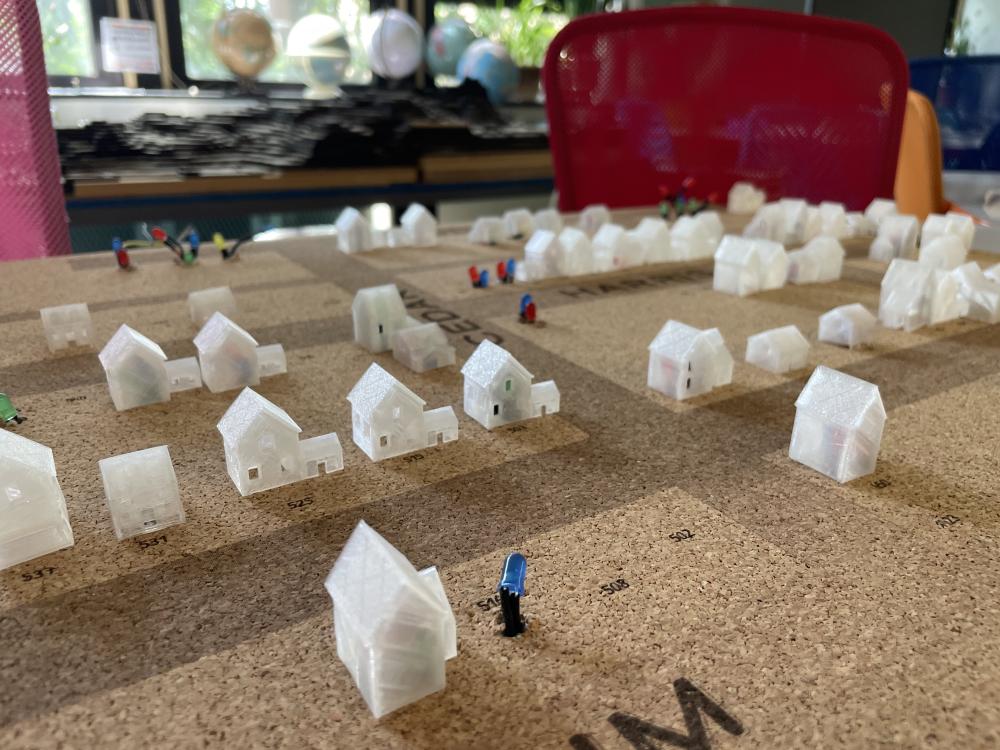
Small towns generate a lot of misconceptions, or so says a ĚěĚěłÔąĎ professor.
Some believe that growing up in a small town can feel limiting or that the towns are outdated. For Jennifer Mapes, Ph.D., assistant professor of geography, author and cartographer, small towns not only break these stereotypes, but they have also provided a wealth of research.
Mapes grew up in a small town, which sparked inspiration for her most recent book, ""
“I also just thought that small towns were really understudied,” Mapes told ĚěĚěłÔąĎ State Today. “Oftentimes, they are lumped together with rural places. I think they behave differently.”
The book is based on research that looks at small towns as urban places. Since starting the book and its research 20 years ago, Mapes has updated and changed information. She went back to update her research on cities that she had studied before. She has also lived in different locations that were added to the book.

Mapes has studied many places, but she was especially interested in the city of ĚěĚěłÔąĎ, specifically the redevelopment of the downtown area.
“To me, I was really interested in following the redevelopment downtown,” Mapes said. “This is a town that really has a vision for itself. It wants to do more, to be more.”
Mapes said what initially caught her attention was how the city took a leap of faith in the downtown redevelopment. She was interested in how the development came about and wanted to follow it through. Other college towns have done the same, marketing their educational institutions around newly redeveloped small towns. For ĚěĚěłÔąĎ, the redevelopment project helped encourage students to explore what the city has to offer.
“I think it would be a very different town if that redevelopment did not happen,” Mapes said.
The new changes added a sense of community beyond the university. In the book, Mapes wrote how a small-town community feel is sought after by planners and developers for larger cities.

ĚěĚěłÔąĎ has that small-town feel. You can walk downtown and recognize business owners and community members, Mapes said.
Mapes noted how much people love the city of ĚěĚěłÔąĎ, which helps make it a vibrant, livable place.
“I’ve met a lot of people who really love the town, and they want to give back,” she said. “They are my favorite part of the city. People who are all doing their part.”
Mapes said that business owners, historians and all sorts of people from around ĚěĚěłÔąĎ pushed for the city to “grow and thrive in the 21st century.”
The city has many elements that contribute to what it is today. The university provides employment, activities, classes and much more. The ĚěĚěłÔąĎ Campus is integrated into the community, and the university and city mutually benefit from each other.
Beyond Mapes’ “The New American Small Town” book, her work at the university is demonstrated in maps she’s created that showcase the rich history of the city.
Mapes has been working with the ĚěĚěłÔąĎ Historical Society for years. Mapes created “,” alongside Sara Koopman, Ph.D., associate professor in the School of Peace and Conflict Studies. That project maps stories from individuals and their experiences from May 1, 1970, to May 5, 1970.
Additionally, Mapes created a three-dimensional map that details the history of ĚěĚěłÔąĎ, specifically, the South End. Information was gathered using census records to highlight ĚěĚěłÔąĎ’s hidden history. Railroad workers, Eastern European immigrants and African Americans who moved North from the Great Migration lived in the South End.

The South End map created by Mapes can be viewed at the ĚěĚěłÔąĎ Free Library until December, after which it will be housed in the ĚěĚěłÔąĎ Historical Society.
Learn more about the ĚěĚěłÔąĎ State Department of Geography.

